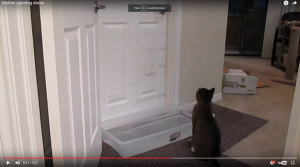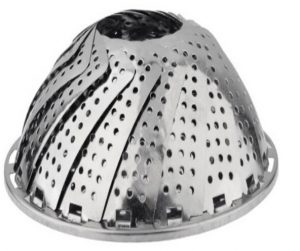“ADST” – A New School Subject?
April 23, 2017 - 8 minutes read“Necessity is the mother of invention.”
Over the years, I’ve conceived of many simple ideas to address small problems: keeping rats out of the garage, protecting my not-quite-mobile daughter from sunshine and our two cuddly cats, and keeping the cats from demanding entrance to the bedroom in the middle of the night by scratching at the door. In my head, I’ve come up with some of the design details for the “Rat Net,” “Baby Dome” and “Cat Moat” to address the difficulties noted above.
While none of these ideas are probably worth pursuing beyond the brainstorming stage, the BC Curriculum introduced the Applied Design, Skills, and Technologies Curriculum (ADST) in mid-2016 which outlines the skills and steps needed for the design process: coming up with an idea, building it and sharing it.
To introduce BICS families to the design aspects of the ADST curriculum, I will put the “Baby Dome” through the design process and explain some of the steps of design students across BC will learn about as part of this curriculum.
Note: The blue font below is language directly from the ADST Grade 6 Curriculum.
Invention: The Baby Dome
Step One: Understanding Context – gather information from potential users
Babies are sensitive to sunlight. They are also not strong enough to move if sat upon by a cuddly cat. Parents lug lots of things around and their houses are often cluttered with toys and “baby stuff”; they don’t need more stuff to carry or store.
Step Two: Defining – choose a design opportunity, identify key features or user requirements, identify main objective and any constraints
Create a dome that protects a baby from cats and sun exposure. The dome can be placed over a child and is sturdy enough to resist the weight of a cat. Make this item portable enough for a parent to take it to the beach to protect the baby from sunshine.
Step Three: Ideating – Generate potential ideas and add to others’ ideas; screen ideas against the objective and constraints; choose an idea to pursue
How can the Baby Dome be both sturdy yet portable? Breathable yet useful at keeping the sun out? Does an item like this exist? Are there any products used for other purposes that might offer some ideas for the objective of the Baby Dome?
Step Four: Prototyping – outline a general plan, identifying tools and materials; construct a first version of the product, making changes to tools, materials and procedures as needed; record iterations of prototyping
Create a metal dome similar to a retractable strainer. The dome will have holes to allow for fresh air to enter. A blanket, of which parents have many, can be draped over top of the dome when required to block out sunlight. The Baby Dome could be folded up into 45 cm long by 30 cm wide disc so that it can be added to a parent’s diaper bag when leaving the house. Aluminium would be a good material as it is a suitable balance of weight and cost.
Step Five: Testing – test the product; gather peer feedback and inspiration; make changes and test again, repeating until satisfied with the product
The prototype, it was determined, looks too much like a strainer, and it was suggested that the Baby Dome was quite ugly, both inside and outside. The idea was shared to paint the Baby Dome black so that it would appear from the inside, with light sneaking in through the holes, like one is peering at stars in outer space. Another peer thought, however, that the “looking into space” illusion might be lost on the baby inside, but it was a fun theme to incorporate and might help market it as a Space Dome.
Step Six: Making – construct the final product, incorporating planned changes
The final product, with various paint jobs to cater to various preferences, was built. It took a lot of trial and error, listening to and accepting the feedback of others, and perseverance to get to this stage.
Step Seven: Sharing – decide how and with whom to share their product; determine whether the product meets the objective and contributes to the individual, family, community, and or/environment; identify new design issues
Some concern was raised with sharing this product. Recalls among items for babies are a common occurrence and some worries about liability (what happens if a cat jumps on the Baby Dome and it collapses?) were identified. Before sharing, further testing is needed!
The design process articulated in the ADST curriculum does not need to just be for the creation of an item, it can be used by learners writing a story, researching a question, or preparing a presentation. It is also a great process for teachers to follow when designing learning: determine a need, develop an idea, test it out, make it better, and try again.
In addition to outlining some of the skills required in the design process, in Grade Six and beyond, some of the content students learn about as part of the ADST curriculum includes computational thinking, computers and communications devices, digital literacy, drafting, entrepreneurship and marketing, food studies, media arts, power technology, metal work, robotics, textiles and woodwork. It is a rich curriculum and one that might be taught as a standalone subject but more often integrated with other areas of learning. The design process, whether building tall towers, minimal-friction cars or aerodynamic paper planes, provides great opportunities to foster an entrepreneurial spirit among learners and support our school goal of developing students’ learning character (ROAR: Responsibility, Openness, Ambition, Resilience); specifically, being open to new ideas and feedback from others, developing ambition with taking an idea beyond the brainstorming stage, and utilizing resilience to persevere through the challenges that inevitably come through testing and refining an idea.


Recent Comments